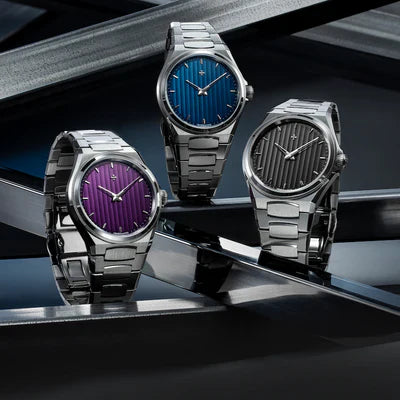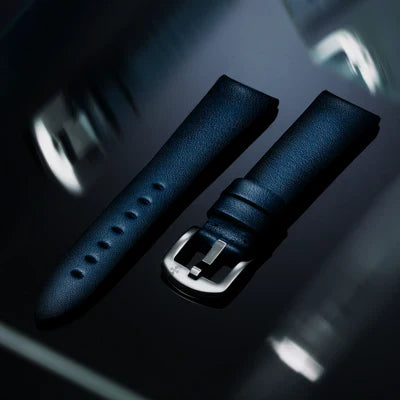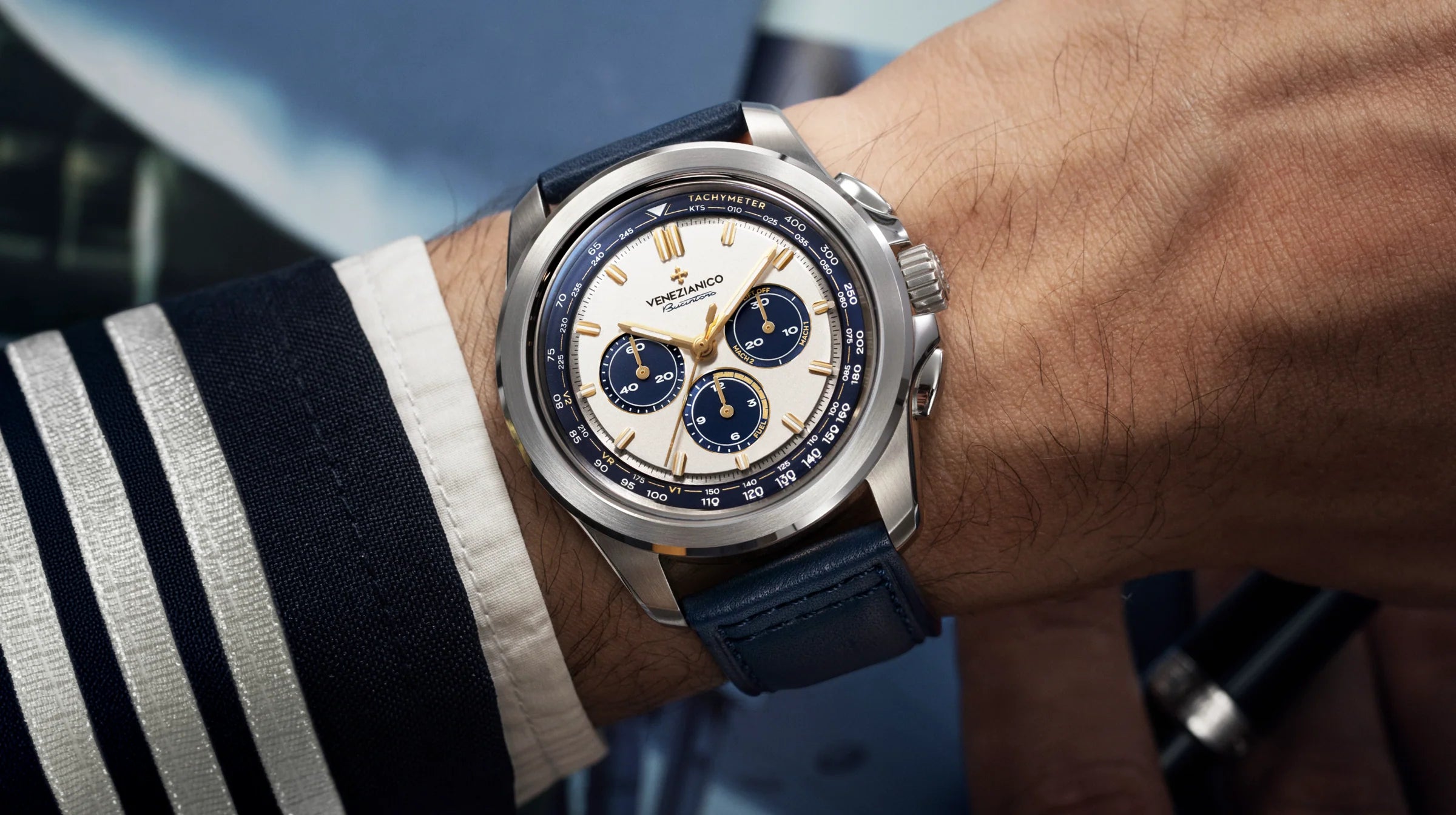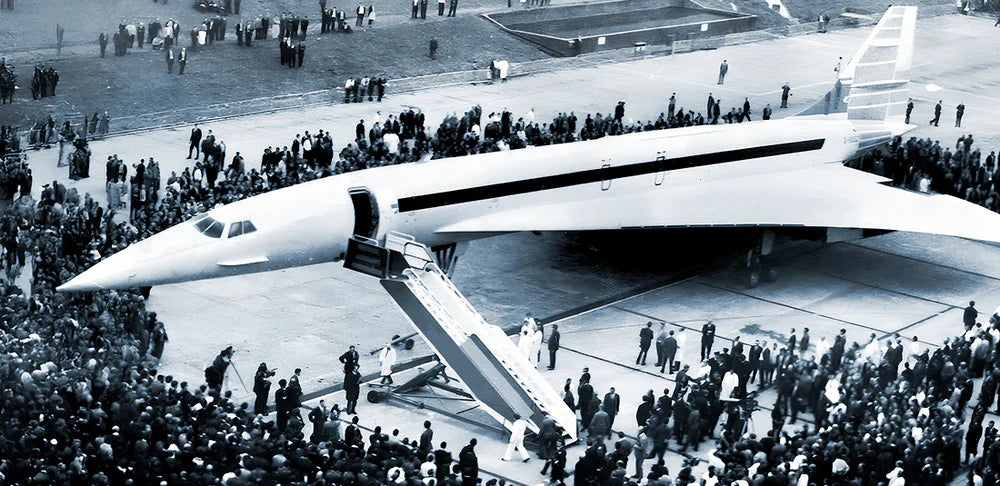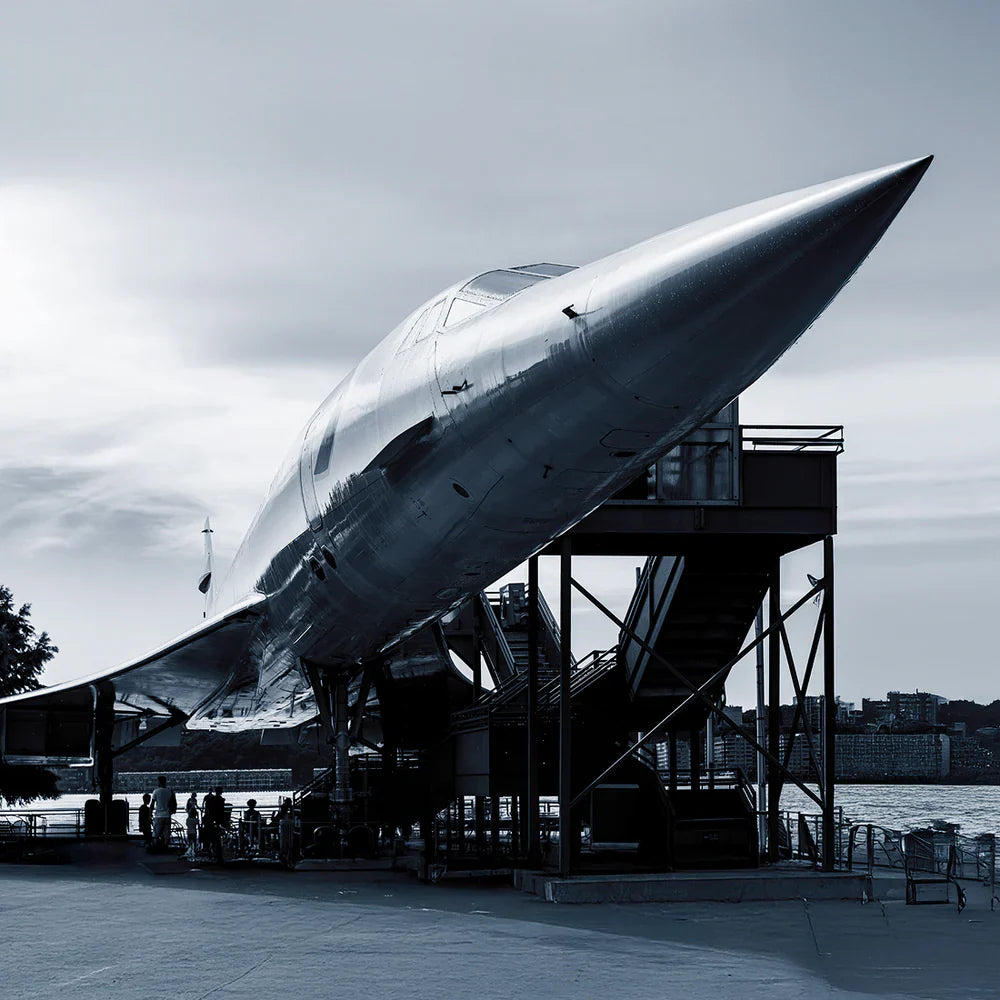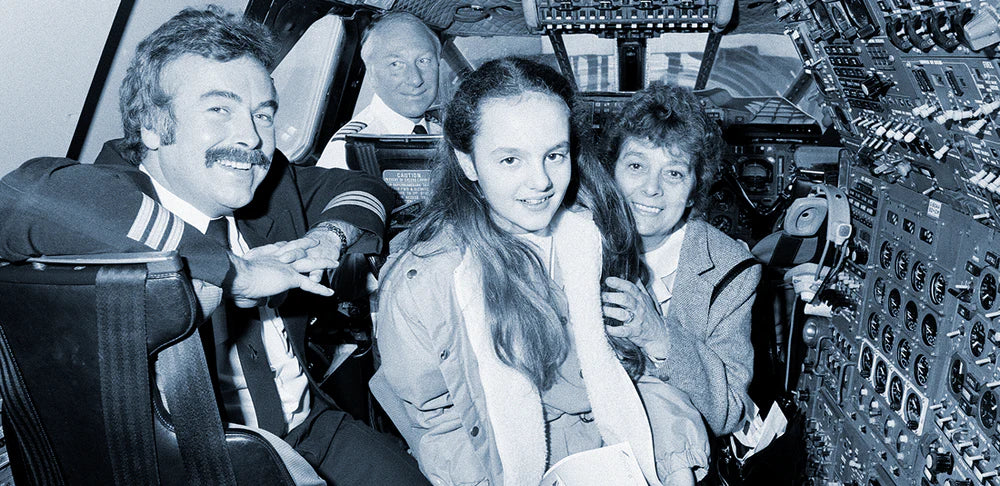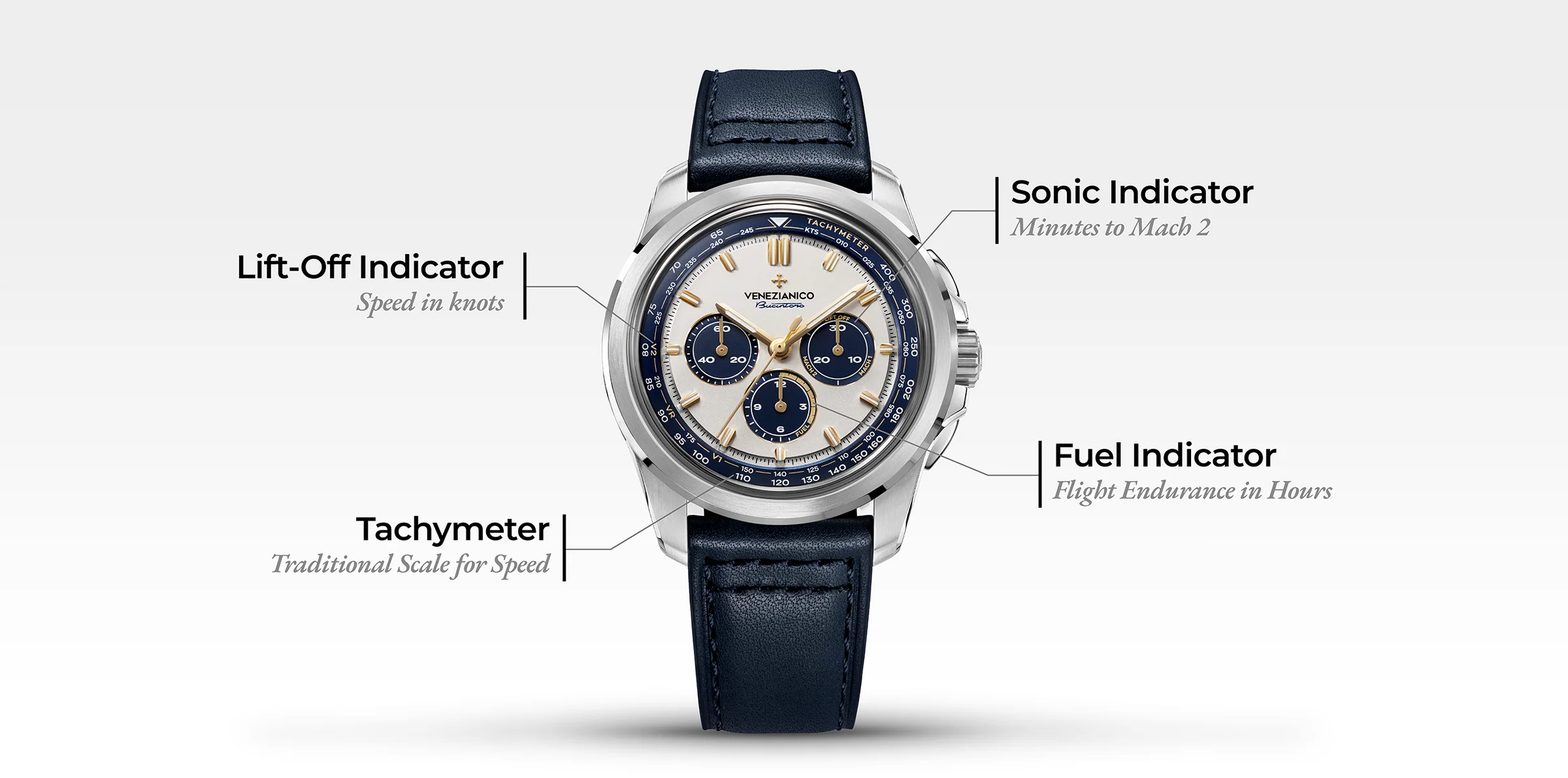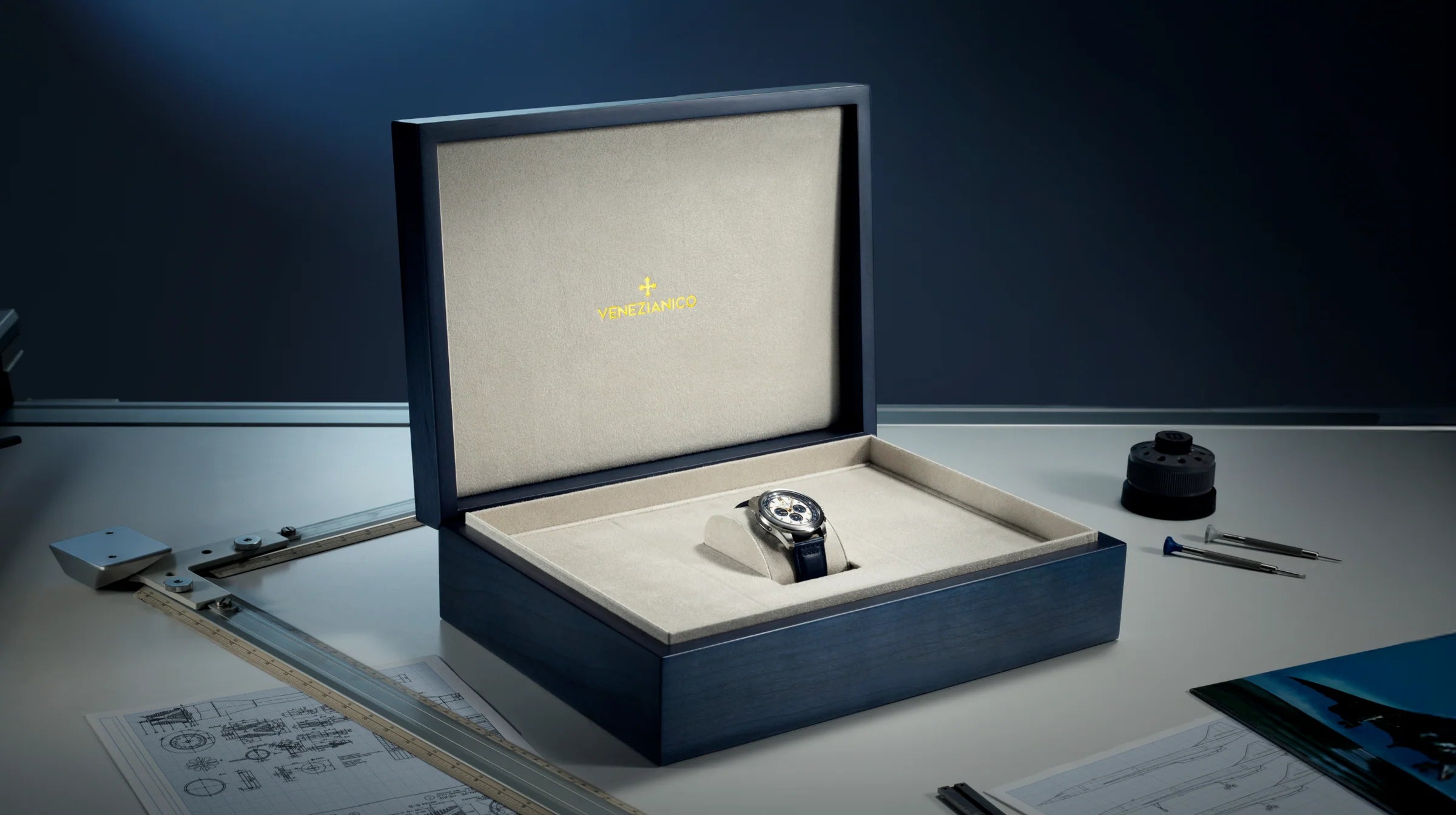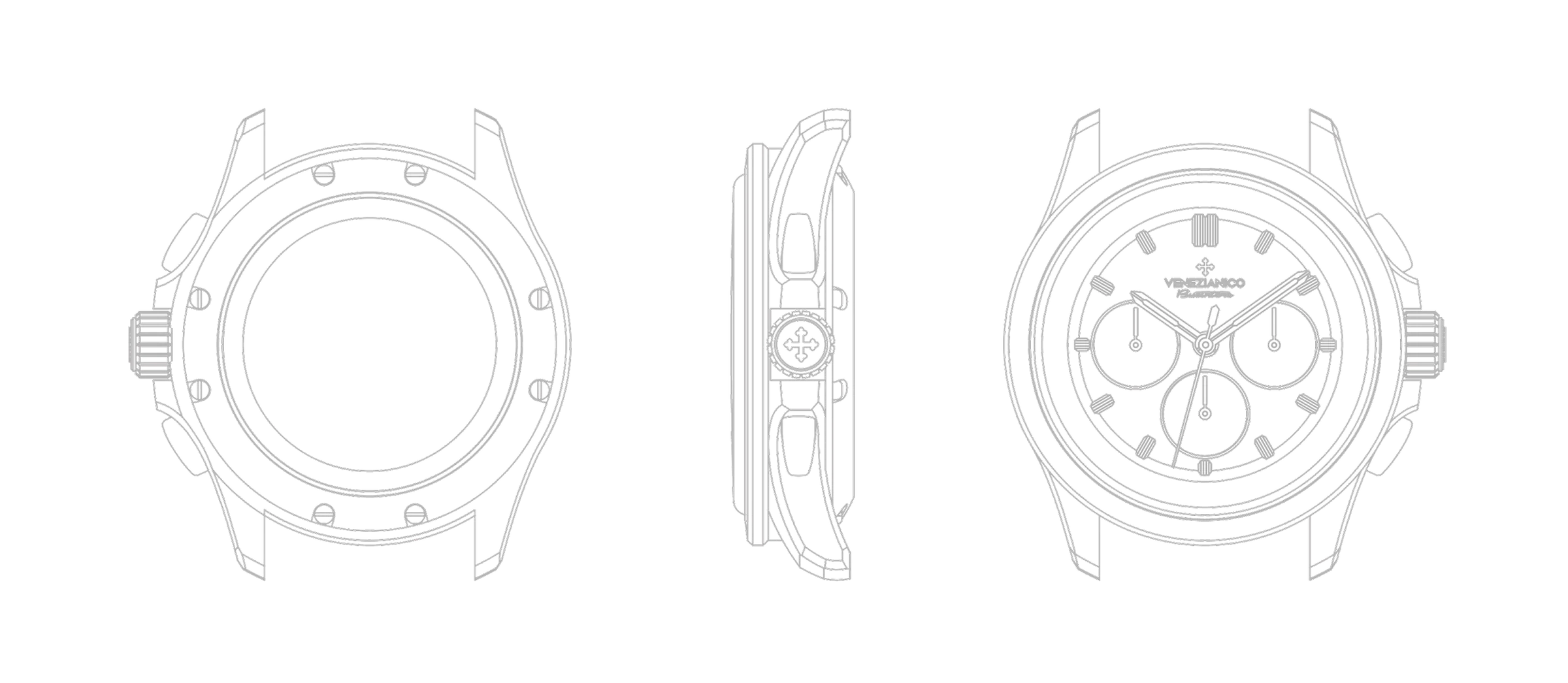
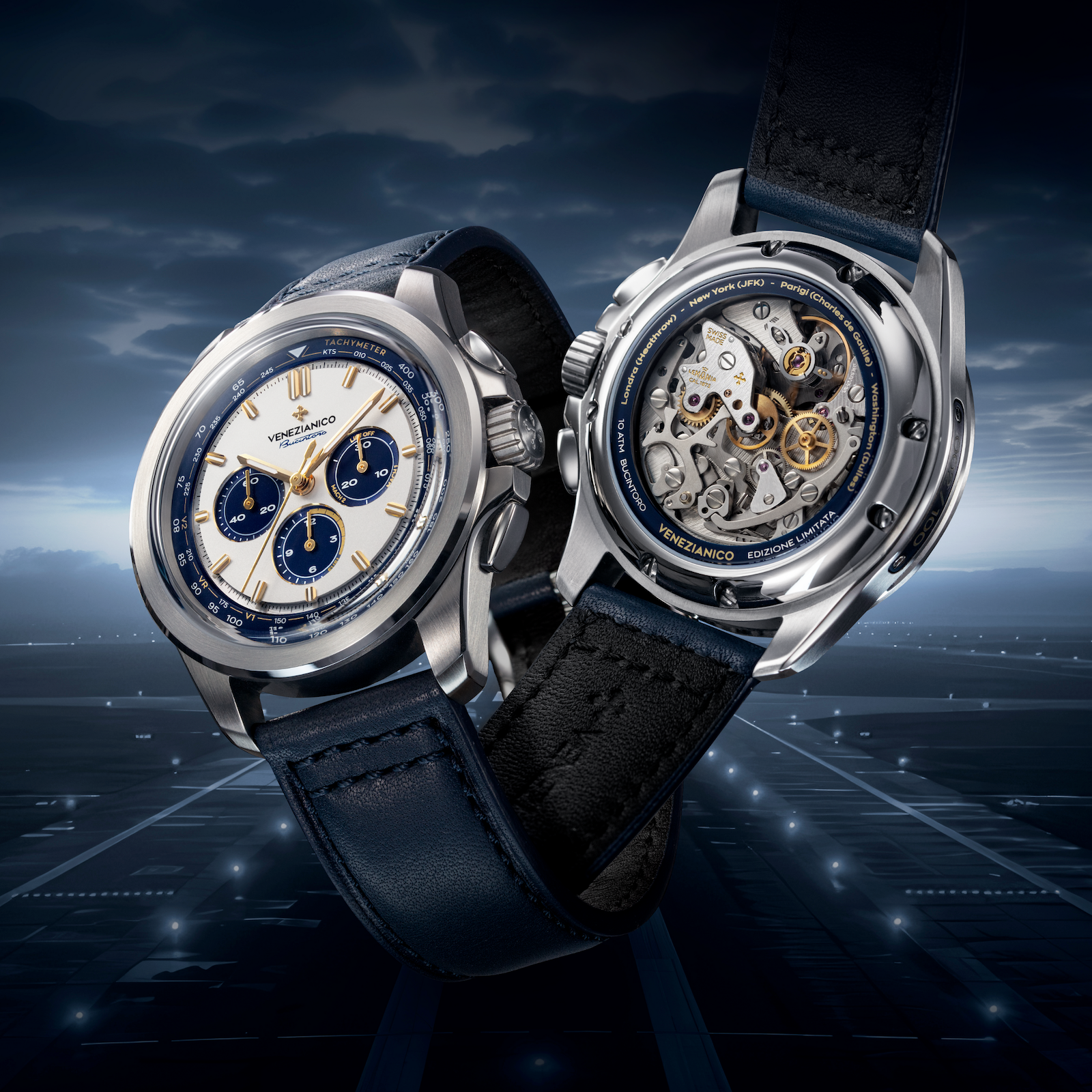
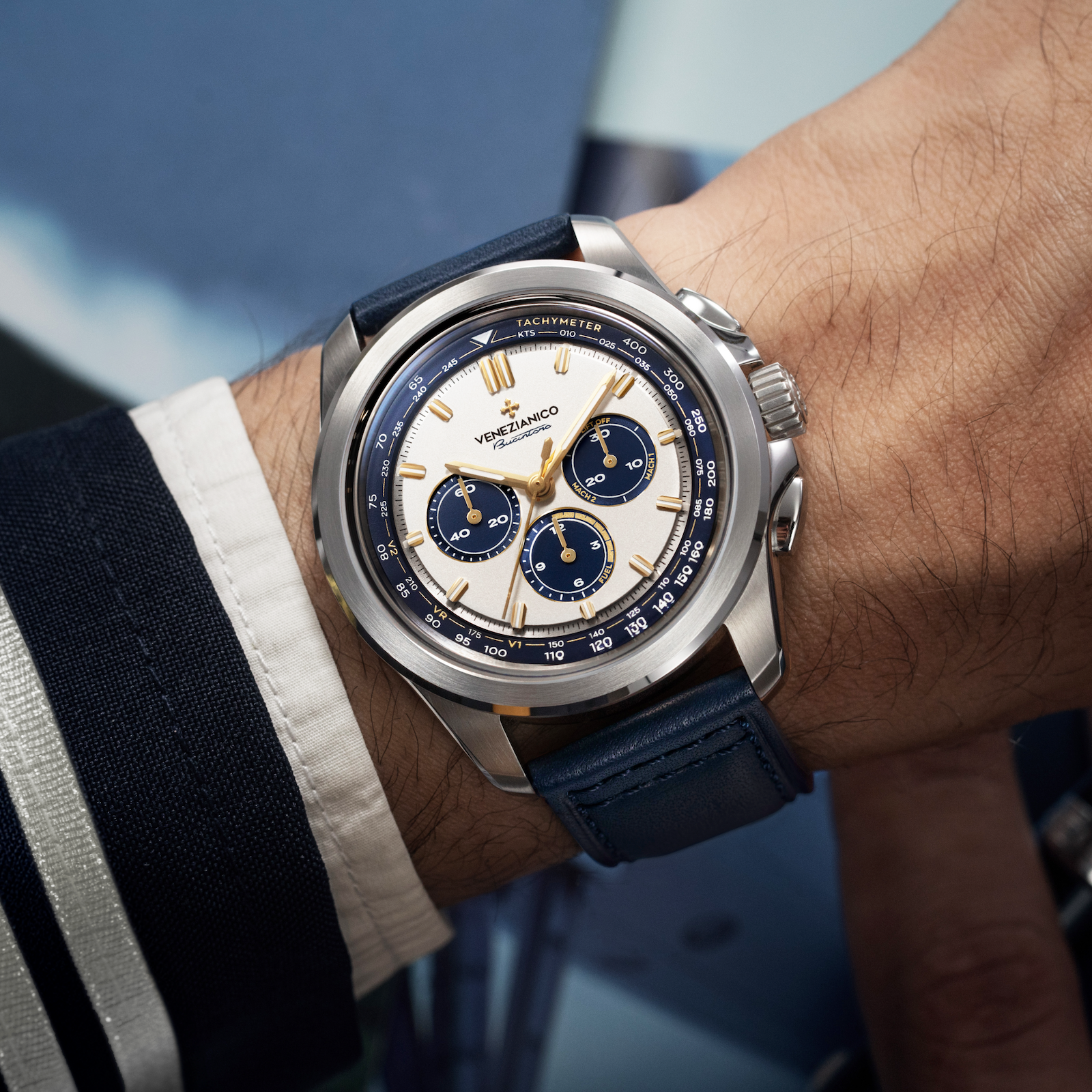
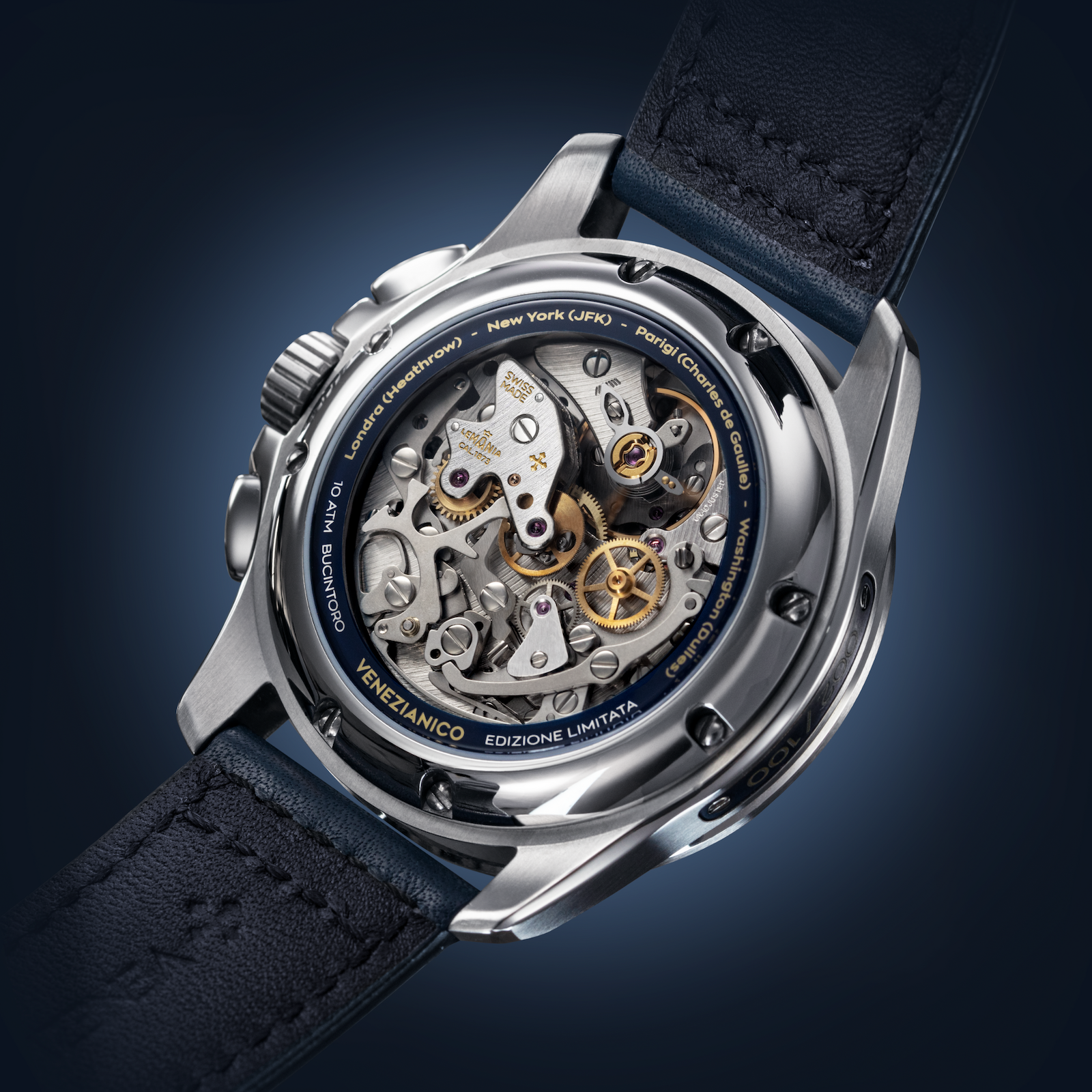
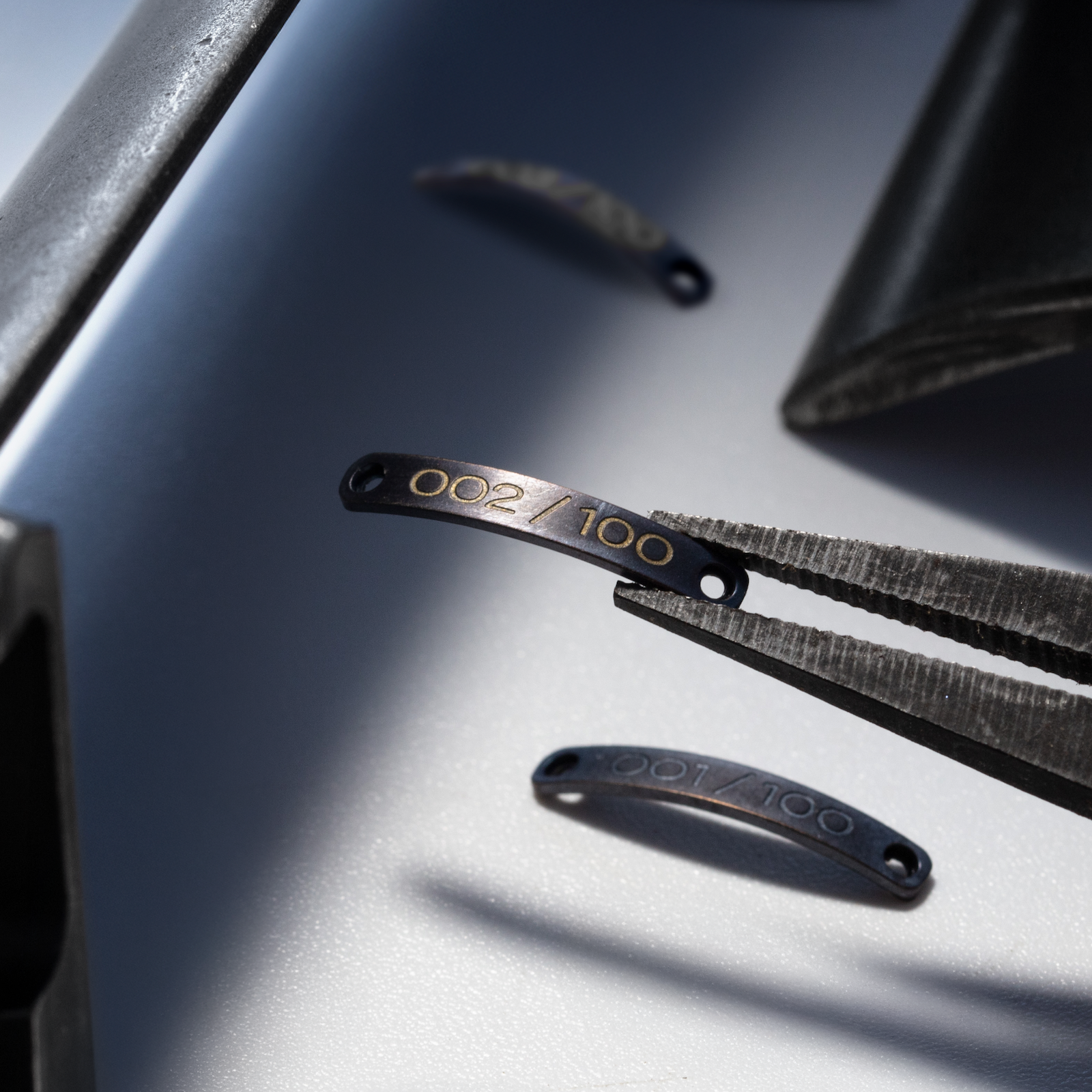
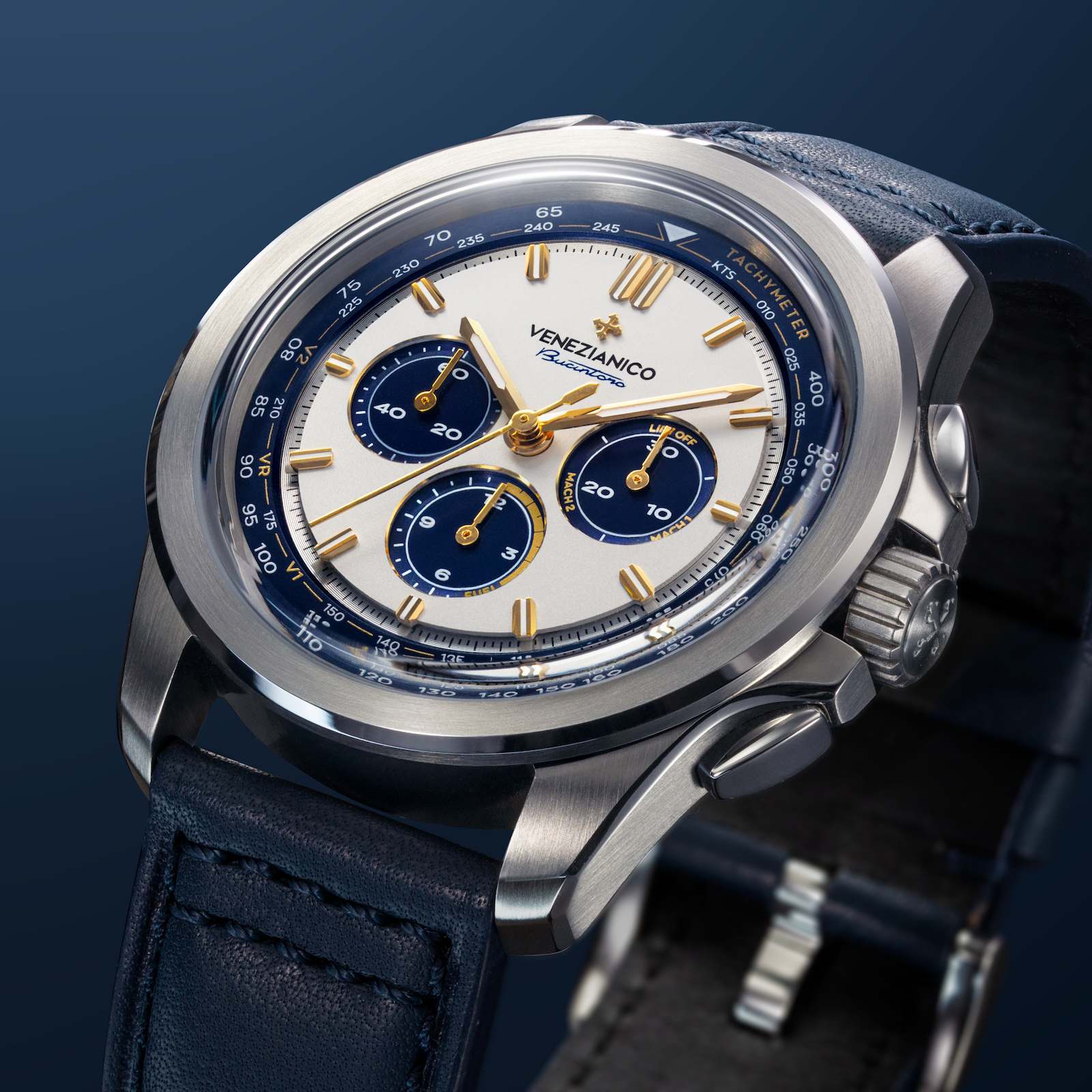
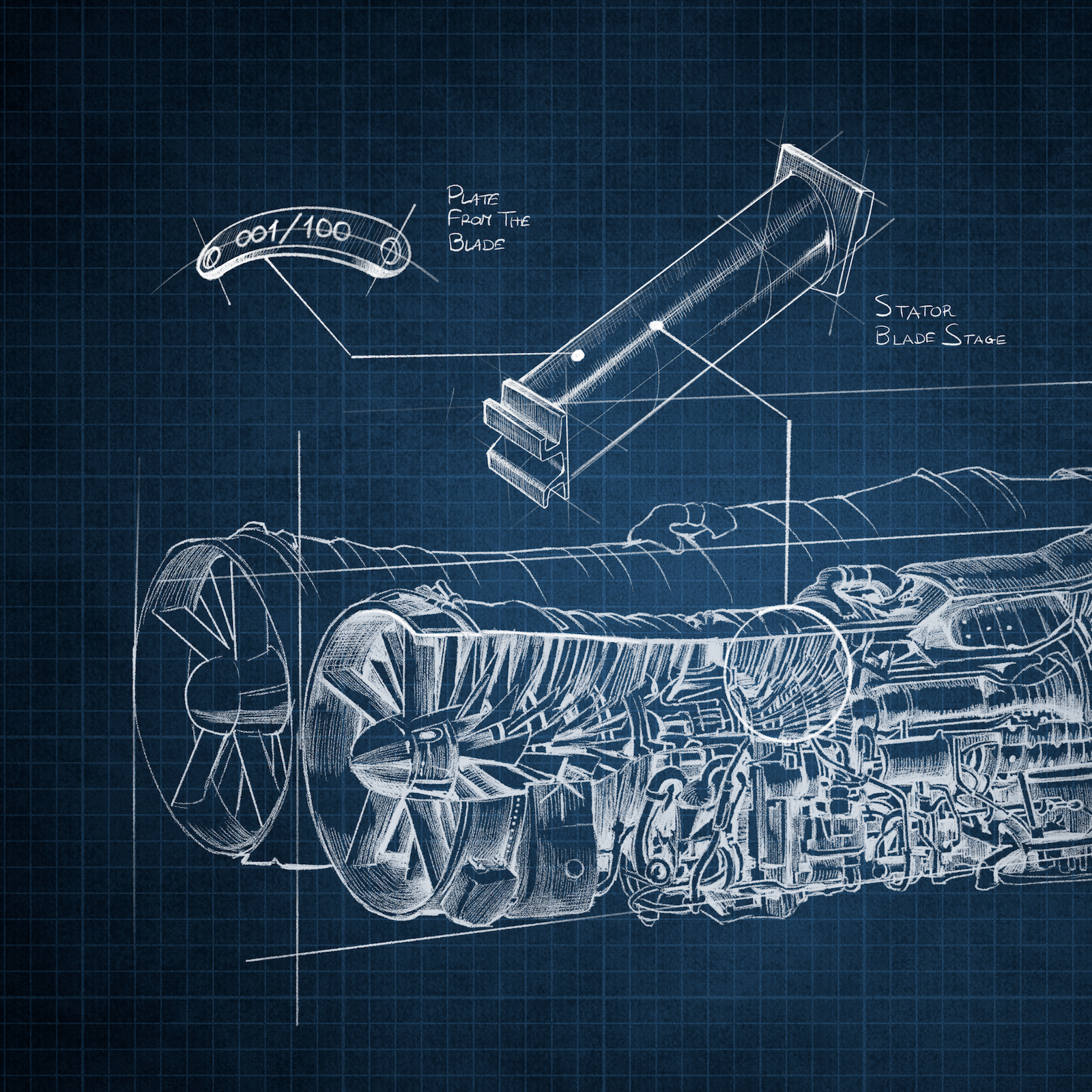
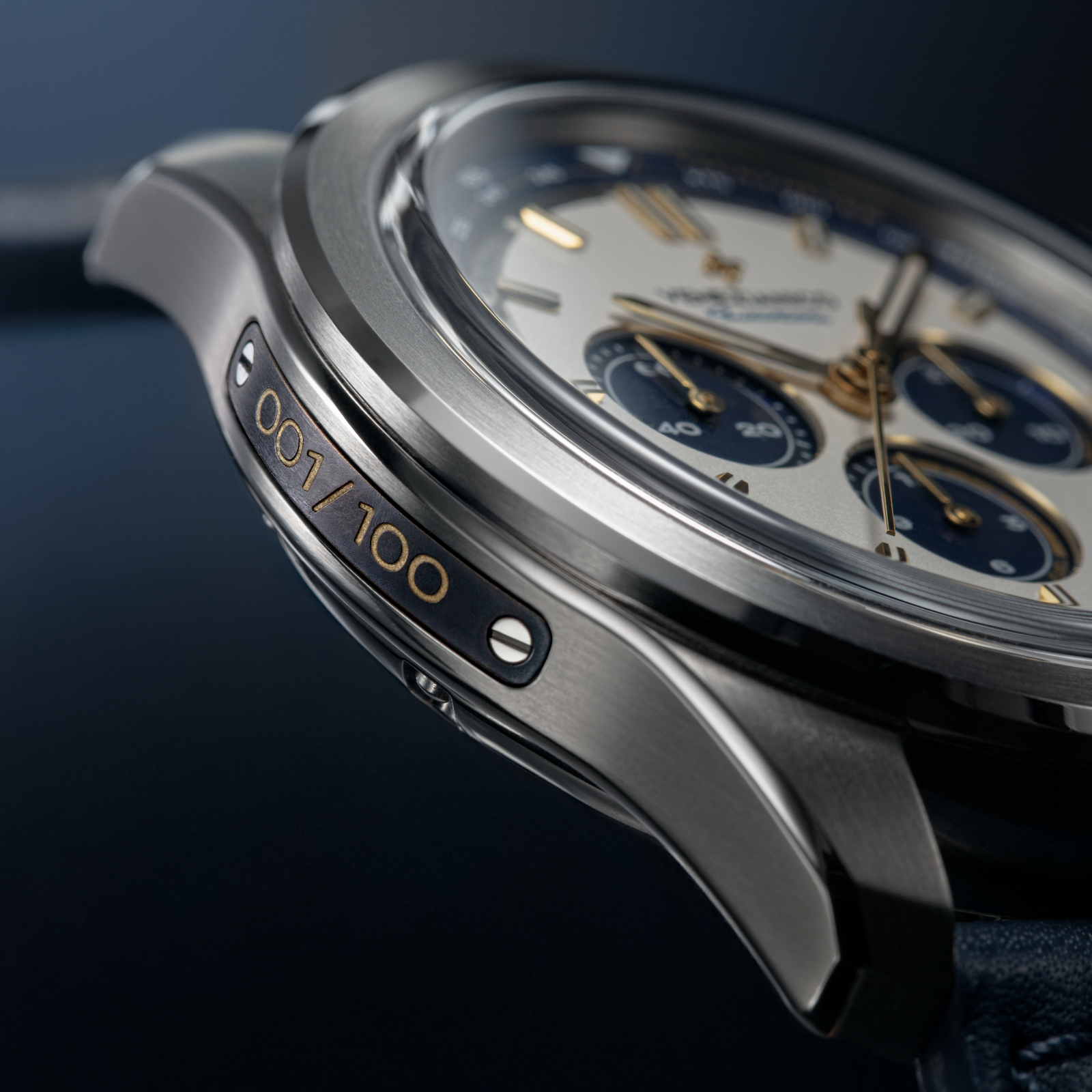
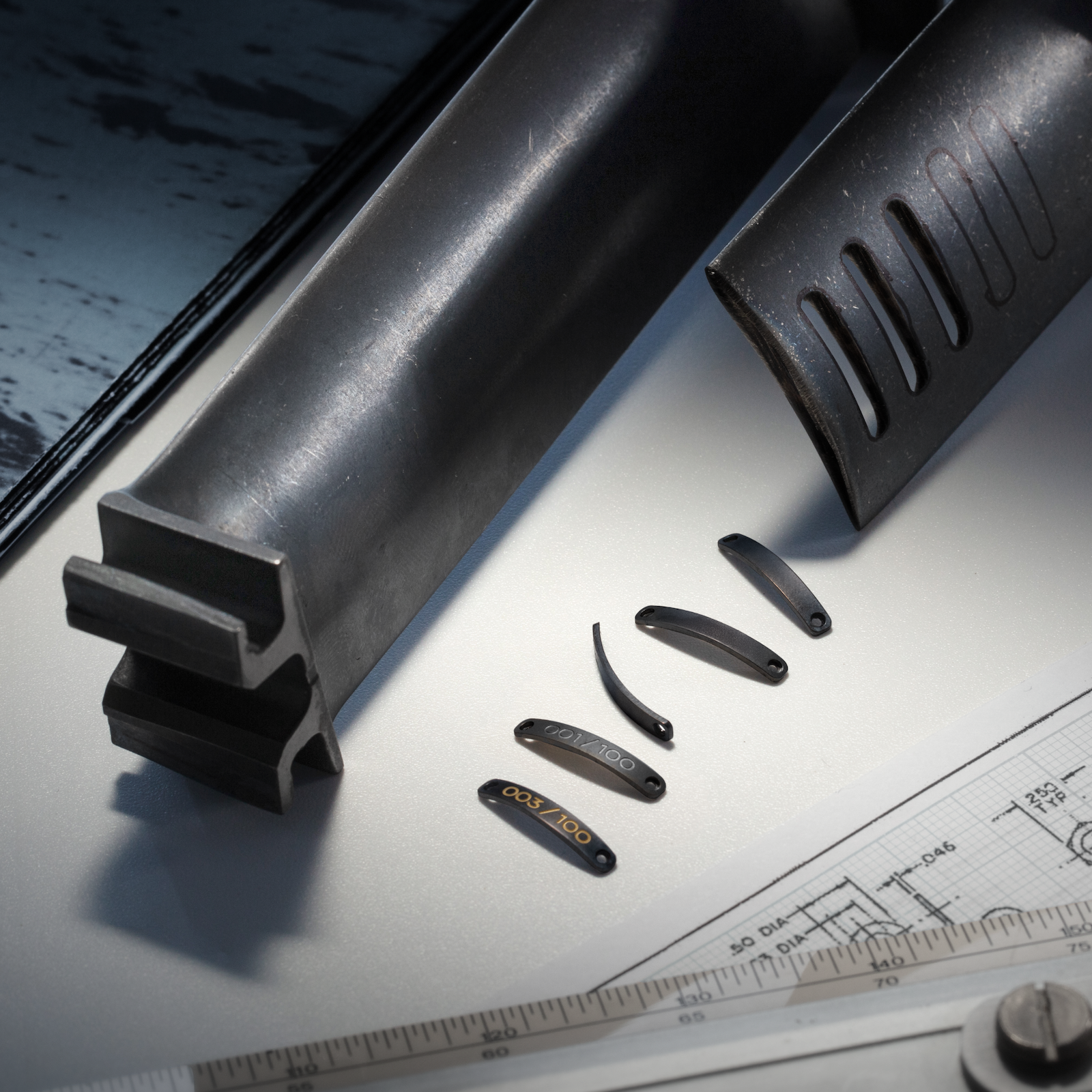
Bucintoro 1976 - Limited Edition
Thanks for taking part at this pre-order!
All recent U.S. import tariffs are already included in our prices. With Delivery Duty Paid (DDP) shipping, tariffs, duties and fees are fully covered. The price you see at checkout is exactly what you pay, with no surprises. Enjoy a smooth and worry-free shopping experience.
The Bucintoro 1976 represents the second chapter in our series dedicated to NOS movements, precious witnesses of the great mechanical tradition. Beating at its heart is the vintage Lemania 1873 calibre, a hand-wound chronograph that once powered professional aviation instruments, a true symbol of reliability and precision. This edition pays tribute to the era when civil supersonic aviation reshaped the boundaries of travel, turning the ocean into just a few hours of flight. To seal this bond, each timepiece houses a certified titanium plaque crafted from an original Concorde engine blade, making every watch unique.
CASE MATERIAL: 316L Stainless Steel
DIMENSIONS: Ø42mm, lug to lug 49mm
THICKNESS:11.50mm (without glass)
GLASS:1.60mm, double-domed sapphire crystal
MOVEMENT: Lemania 1873 (NOS), Swiss Made
FUNCTION: Chronograph
LUMINOUS MATERIAL: BGW9 Super-LumiNova®
BEZEL: 316L Stainless Steel
WR: 10ATM (= 100mt)
STRAP: Leather, Made in Italy
EXTRA: Sansovino Bracelet
The Lemania 1873 movements used in this edition come from different batches sourced from European private collections. They were produced in different years and, while all belonging to the same calibre family, they may show slight aesthetic or construction differences. Each movement has nevertheless been fully restored and overhauled by our master watchmaker to ensure complete functionality and mechanical integrity.
All orders include free shipping. Here are the average delivery times:
- EU Countries: 1-2 business days
- United Kingdom: 2-3 business days
- USA: 2-3 business days
- Other Countries: 2-5 business days
If the watch does not meet expectations, it can be returned within 14 days for a full refund of the purchase amount. For more info, check out ourTerms and Conditions.

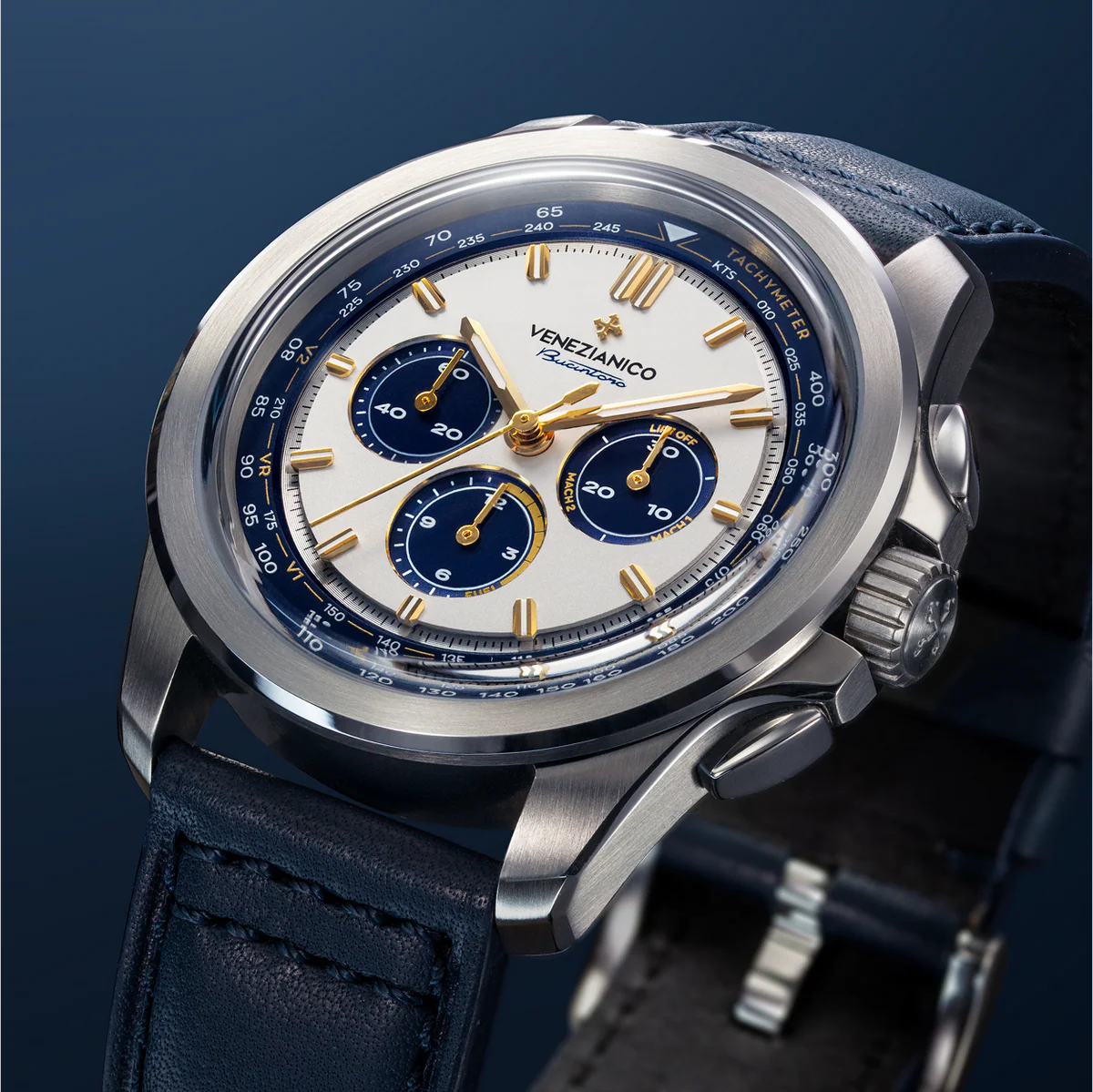
The minute counter of the Bucintoro 1976 recalls the cockpits of the Concorde, where every second was essential to push the limits of speed. The indices dedicated to Mach 1 and Mach 2 are not simple graphic references, but symbols of that unique moment when mankind broke through the sound barrier. A detail that transforms the dial into a tribute to the supersonic era, where precision and audacity became one.
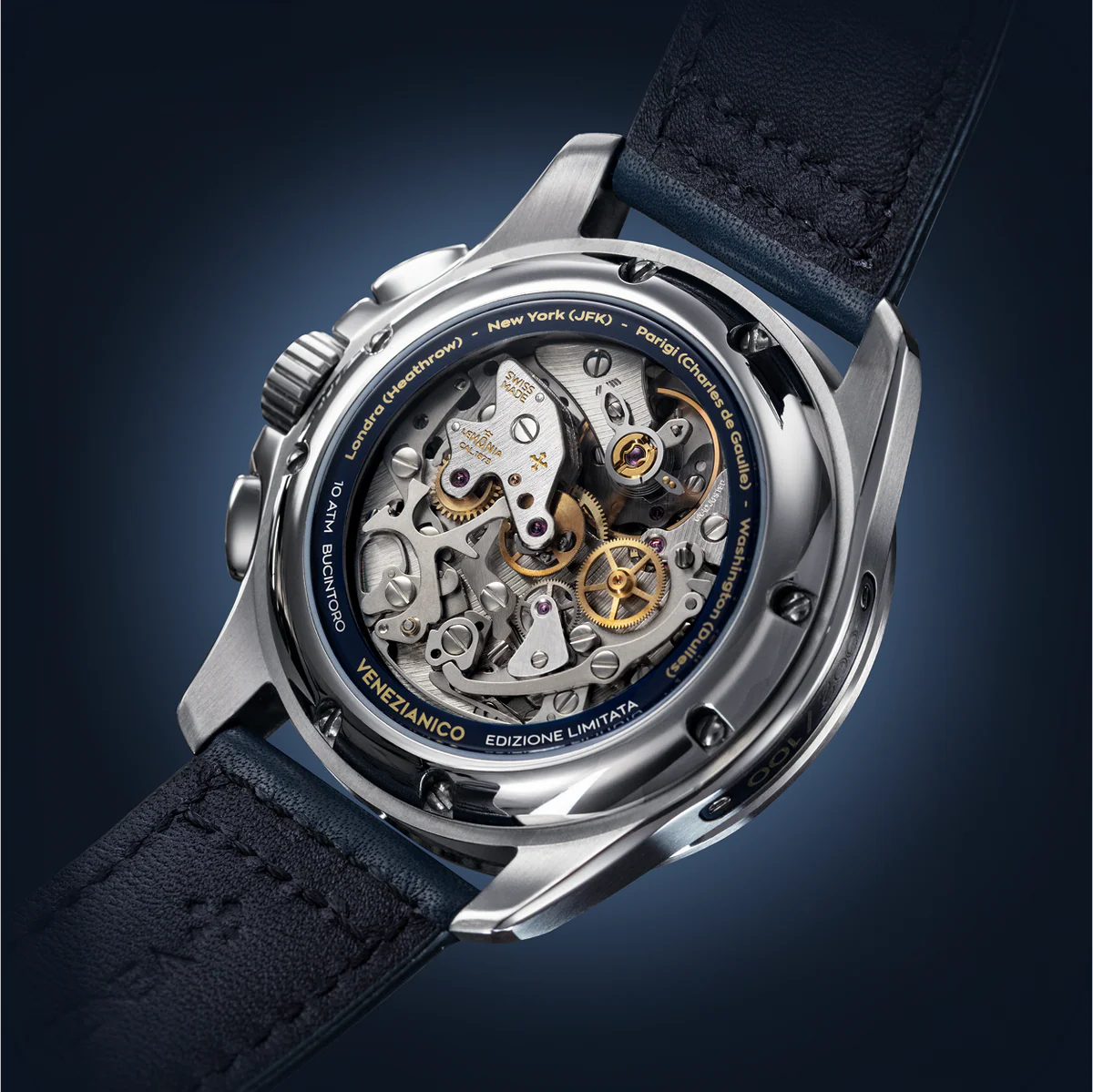
The sapphire crystal caseback reveals the Lemania 1873 caliber, while the outer ring, in an elegant golden finish, bears the names of the cities that symbolize the supersonic era: London, Paris, New York, and Washington. Not mere decorative inscriptions, but ideal coordinates recalling the transatlantic routes flown by the Concorde, turning the movement into a living memory of journeys that reshaped the very perception of time.
The minute counter of the Bucintoro 1976 recalls the cockpits of the Concorde, where every second was essential to push the limits of speed. The indices dedicated to Mach 1 and Mach 2 are not simple graphic references, but symbols of that unique moment when mankind broke through the sound barrier. A detail that transforms the dial into a tribute to the supersonic era, where precision and audacity became one.
The sapphire crystal caseback reveals the Lemania 1873 caliber, while the outer ring, in an elegant golden finish, bears the names of the cities that symbolize the supersonic era: London, Paris, New York, and Washington. Not mere decorative inscriptions, but ideal coordinates recalling the transatlantic routes flown by the Concorde, turning the movement into a living memory of journeys that reshaped the very perception of time.


"IT WASN'T JUST THE SPEED. IT WAS THE FEELING OF LIVING AHEAD OF THE REST OF THE WORLD."
The Bucintoro 1976 marks the second chapter in our series dedicated to NOS movements, precious witnesses of the great mechanical tradition. At its heart beats the vintage Lemania 1873 caliber, a manual chronograph that once powered professional aviation instruments, a true symbol of reliability and precision. This edition pays tribute to the era when supersonic civil aviation redefined the boundaries of travel, turning the ocean into just a few hours of flight. To seal this bond, each piece carries a certified titanium plate crafted from an original Concorde blade, making every timepiece truly one of a kind.
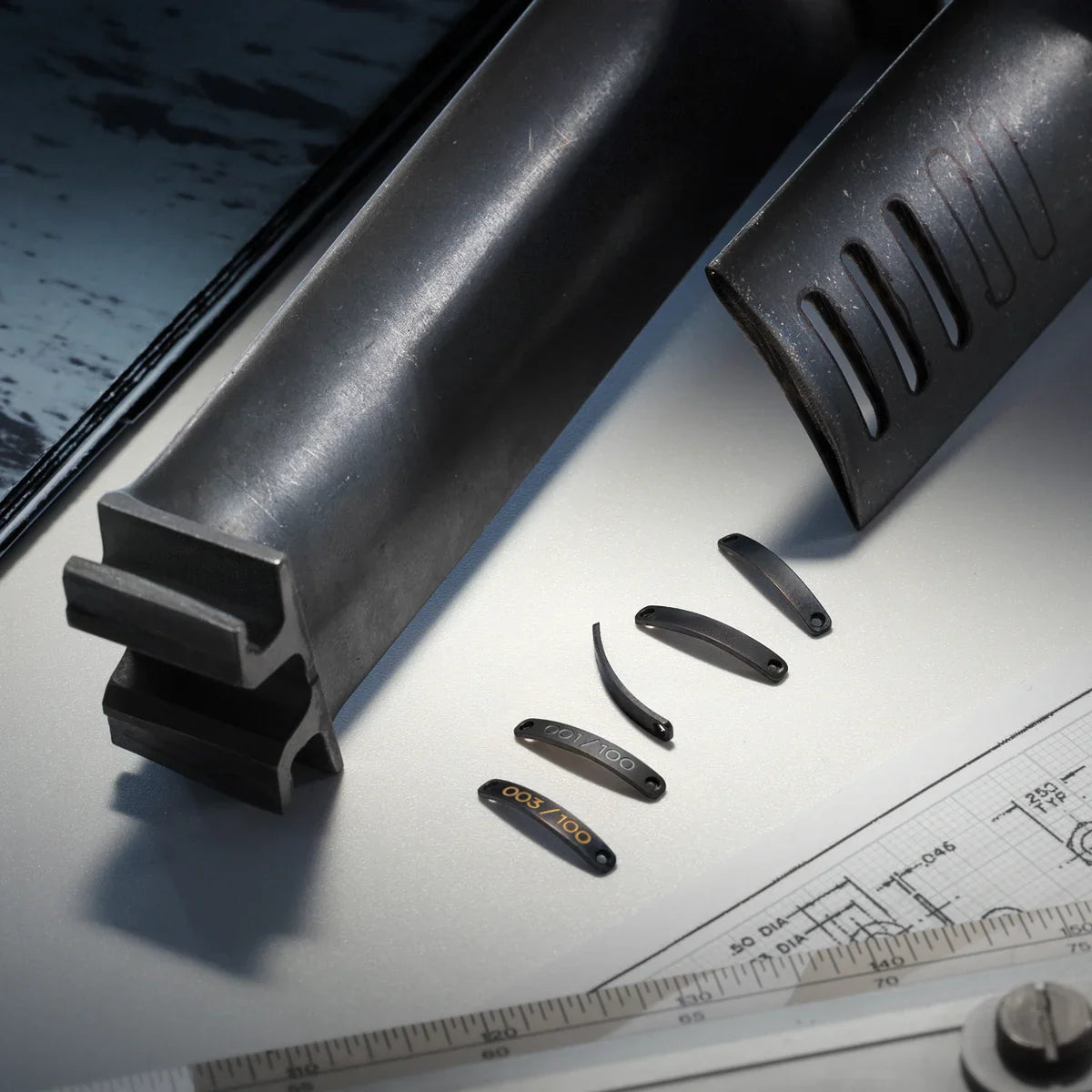
The original blades of the Rolls-Royce/Snecma Olympus 593 Concorde engine, sourced from certified lots 3464 and 3335 and made of titanium–nickel alloy, are meticulously crafted into numbered plaques. Each gold engraving contains not only the identity of the limited edition but also the memory of thousands of supersonic flight hours across the Atlantic. A process that makes every piece an unrepeatable fragment of aeronautical history, forever integrated into one of our timepieces.
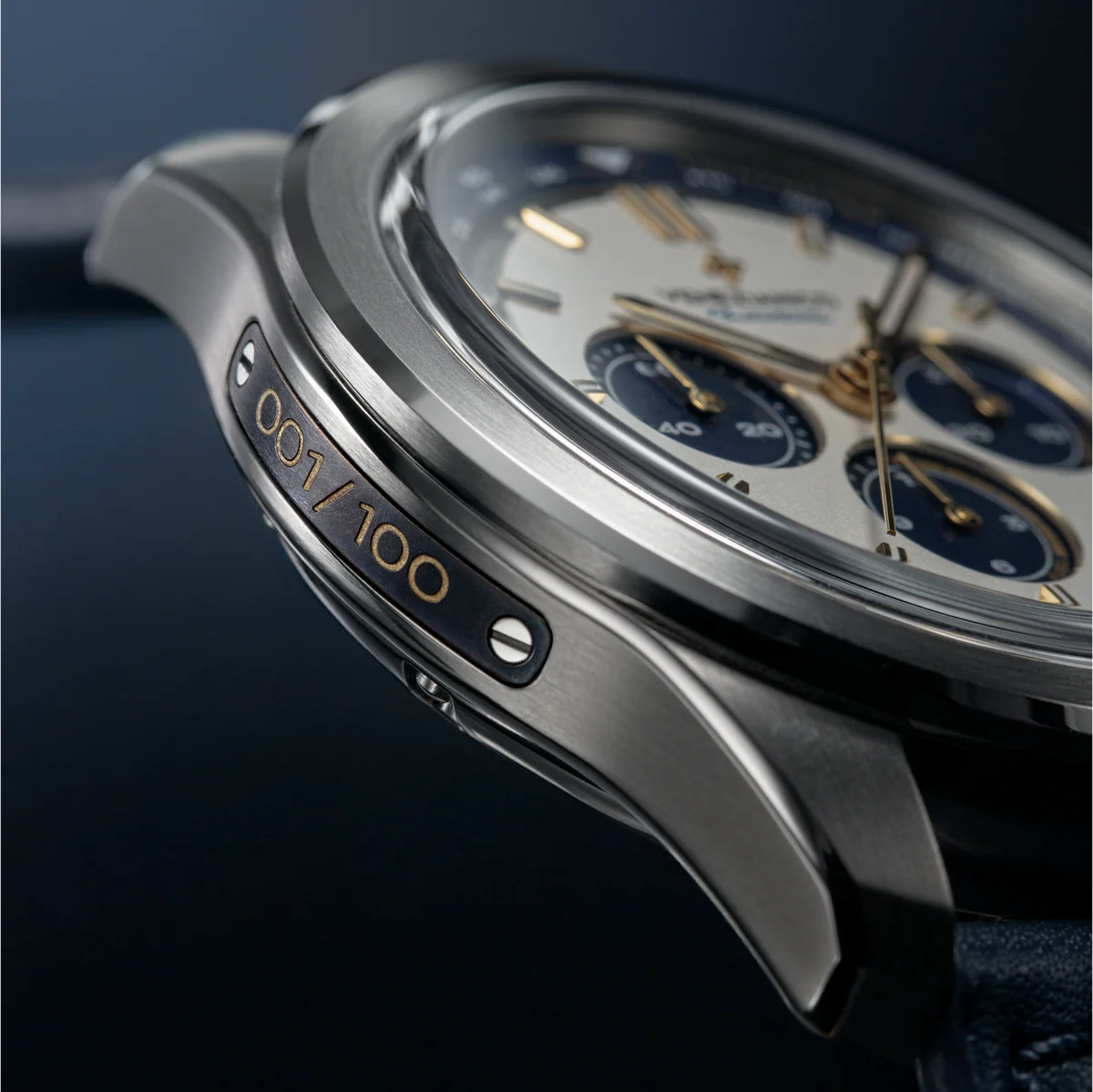
Each piece preserves an extraordinary detail: a plaque crafted from an original Concorde engine blade. This component, made of a titanium–nickel alloy, once crossed the Atlantic at supersonic speed, enduring thousands of flight hours. Today, transformed into a distinctive element of the case, it becomes an authentic fragment of aeronautical history and a symbol of the connection between legendary engineering and fine watchmaking.
The original blades of the Rolls-Royce/Snecma Olympus 593 Concorde engine, sourced from certified lots 3464 and 3335 and made of titanium–nickel alloy, are meticulously crafted into numbered plaques. Each gold engraving contains not only the identity of the limited edition but also the memory of thousands of supersonic flight hours across the Atlantic. A process that makes every piece an unrepeatable fragment of aeronautical history, forever integrated into one of our timepieces.
Each piece preserves an extraordinary detail: a plaque crafted from an original Concorde engine blade. This component, made of a titanium–nickel alloy, once crossed the Atlantic at supersonic speed, enduring thousands of flight hours. Today, transformed into a distinctive element of the case, it becomes an authentic fragment of aeronautical history and a symbol of the connection between legendary engineering and fine watchmaking.


The Lemania 1873
For the second time, we managed to recover a limited number of vintage Lemania 1873 calibers, authentic witnesses of a great mechanical tradition. After decades of silence, these NOS movements have been brought back to life through a meticulous restoration process, respecting their original identity and the distinctive finishes of the 1970s. This same caliber, with its 21,600 vibrations per hour and a power reserve of about 40 hours, accompanied mankind’s most extreme challenges: from professional aviation instruments to the wrists of NASA personnel. A legacy of precision that today finds its natural connection with the Concorde, where pilots relied on time as a vital instrument at supersonic speed.
21,600 vibrations/hour (3 Hz)
–5 / +10 s/day (average expected value after restoration and regulation)
~40 hours
Hours, minutes, small seconds, 30-minute and 12-hour chronograph
6.9mm
The savoir-faire of our master watchmaker: Daniele Zorzetto
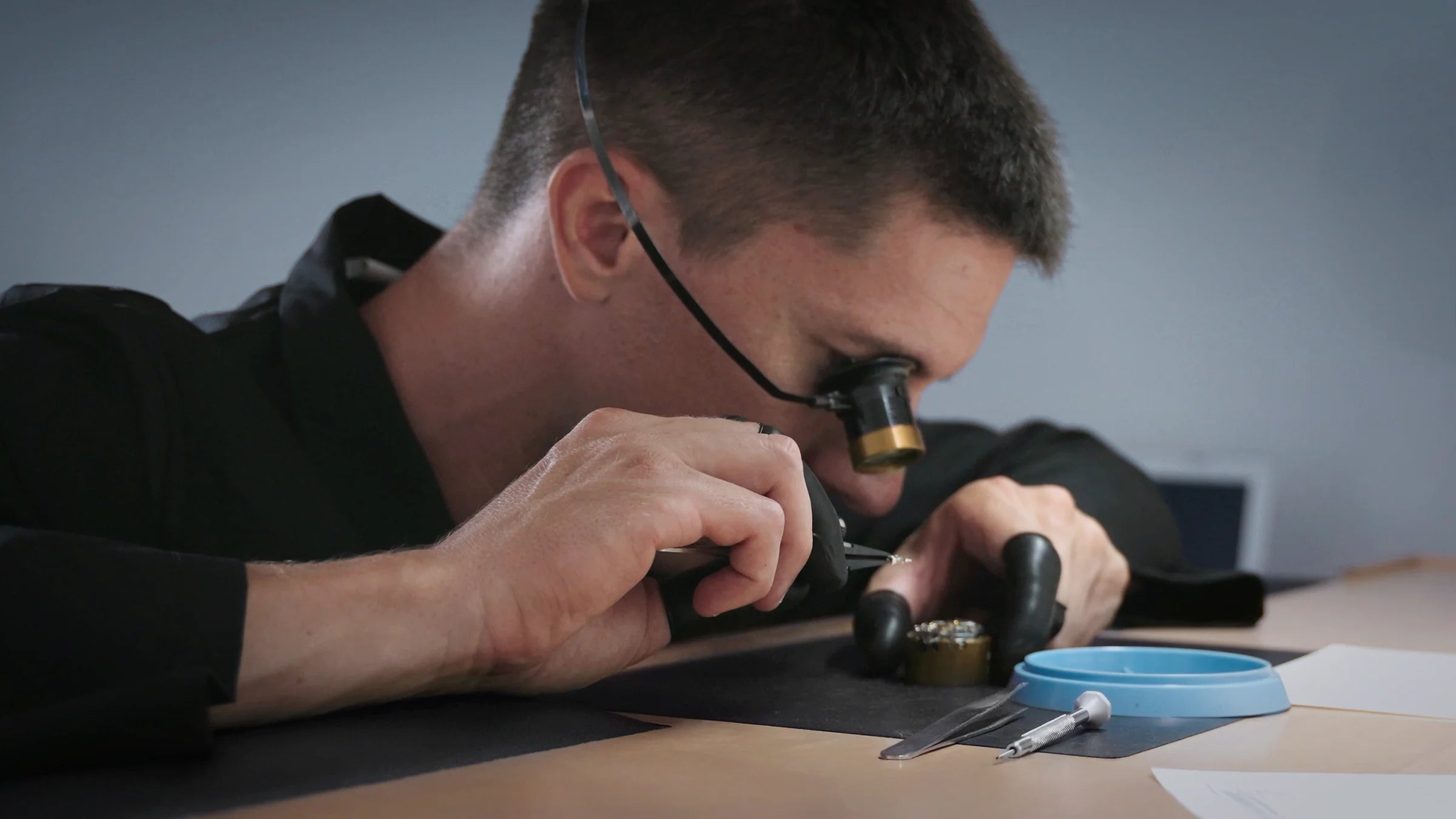
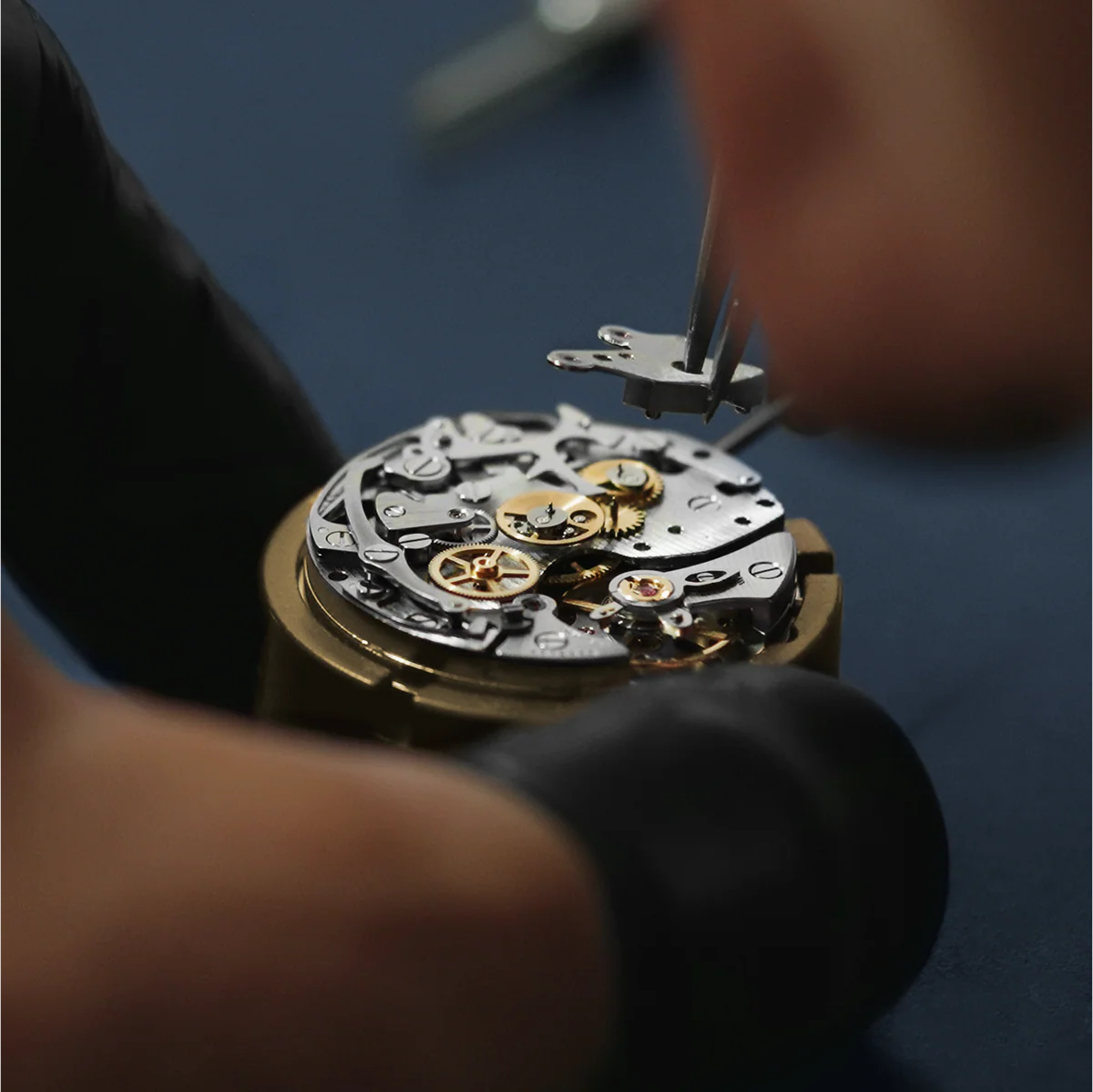
Each Lemania 1873 is fully disassembled, piece by piece, and subjected to a meticulous inspection. Every component is assessed, cleaned, and—when necessary—repaired with techniques that respect the delicacy of a vintage movement. This process requires refined watchmaking skills and extreme patience: restoring these calibers means not only reviving a mechanism but also giving voice once more to a story that has crossed the skies and space.
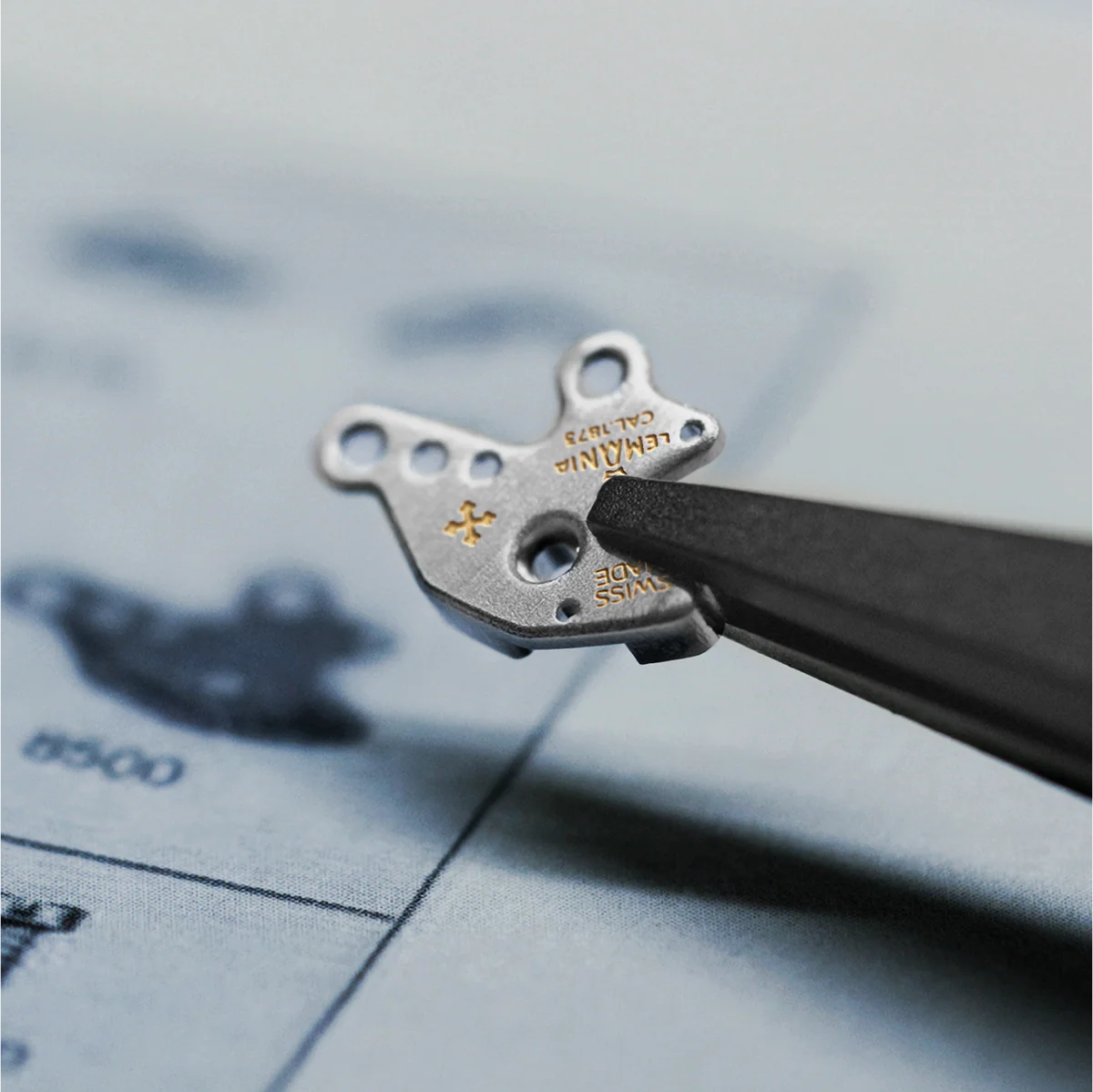
Some elements, irreparably worn by time, are recreated from scratch. Not mere replacements, but true reconstructions, crafted with the same finishes and techniques typical of the 1970s. Thanks to this attention, every caliber preserves its original soul, once again reflecting the technical perfection and aesthetic character that made the Lemania 1873 an icon of watchmaking.

After the complete overhaul, each movement is carefully reassembled: gears, bridges, and levers find their place again, reviving the mechanical symphony of the Lemania 1873. This is followed by a thorough testing phase, verifying precision and reliability even under the most demanding conditions. Only then is the caliber ready to return to service, housed within the Bucintoro 1976, to continue its story with the same strength and reliability that once made it indispensable to Concorde pilots.
Each Lemania 1873 is fully disassembled, piece by piece, and subjected to a meticulous inspection. Every component is assessed, cleaned, and—when necessary—repaired with techniques that respect the delicacy of a vintage movement. This process requires refined watchmaking skills and extreme patience: restoring these calibers means not only reviving a mechanism but also giving voice once more to a story that has crossed the skies and space.
Some elements, irreparably worn by time, are recreated from scratch. Not mere replacements, but true reconstructions, crafted with the same finishes and techniques typical of the 1970s. Thanks to this attention, every caliber preserves its original soul, once again reflecting the technical perfection and aesthetic character that made the Lemania 1873 an icon of watchmaking.
After the complete overhaul, each movement is carefully reassembled: gears, bridges, and levers find their place again, reviving the mechanical symphony of the Lemania 1873. This is followed by a thorough testing phase, verifying precision and reliability even under the most demanding conditions. Only then is the caliber ready to return to service, housed within the Bucintoro 1976, to continue its story with the same strength and reliability that once made it indispensable to Concorde pilots.



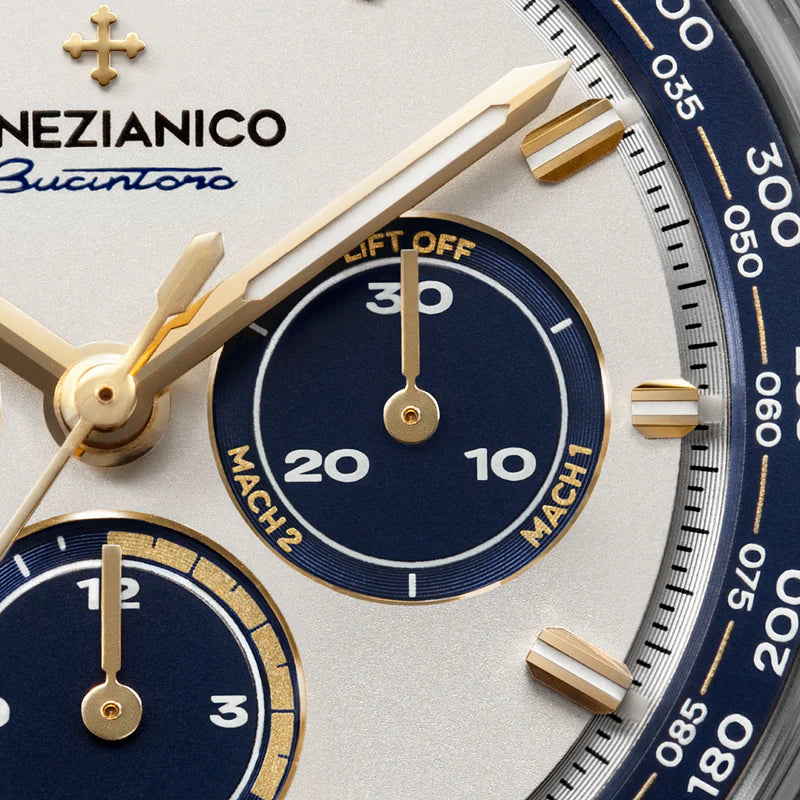
A key element for timing the crucial phases of flight, when the pilot had to monitor with absolute precision the time required to reach the target speed. The markers dedicated to Mach 1 and Mach 2 are not mere graphic details: they represent the exact moment when the aircraft broke the sound barrier, turning anticipation into tension and the instant into pure emotion. On the dial of the Bucintoro 1976, this feature becomes a tangible symbol of the supersonic era, where every minute was a conquest.

Mounted on the same axis as the hour and minute hands, the central chronograph hand becomes the primary instrument for monitoring speed in real time. Startable, stoppable, and resettable via the pushers, it allows every variation to be recorded instantly. It is the watchmaking equivalent of onboard instruments that translated each fraction of time into operational data. In the Bucintoro 1976, every sweep of the hand measures not only seconds, but tells the rhythm of the journey and the dynamics of flight.
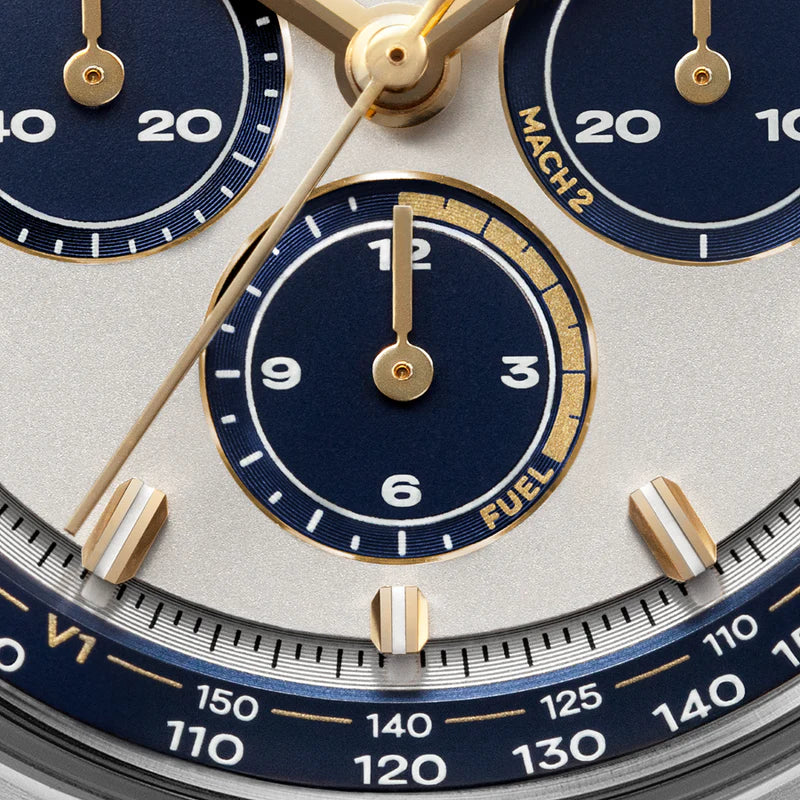
Marked with the wordFuel, the hour counter pays homage to the instruments that indicated the aircraft’s remaining fuel range—vital information for transatlantic flights capable of crossing the ocean in just over three hours. In this watchmaking reinterpretation, the function becomes a direct reference to resource management and the safety of long-haul routes. Transformed into an aesthetic detail, the Fuel counter brings back to the dial the echo of those cockpits, where every indication was an essential piece of the supersonic journey.
A key element for timing the crucial phases of flight, when the pilot had to monitor with absolute precision the time required to reach the target speed. The markers dedicated to Mach 1 and Mach 2 are not mere graphic details: they represent the exact moment when the aircraft broke the sound barrier, turning anticipation into tension and the instant into pure emotion. On the dial of the Bucintoro 1976, this feature becomes a tangible symbol of the supersonic era, where every minute was a conquest.
Mounted on the same axis as the hour and minute hands, the central chronograph hand becomes the primary instrument for monitoring speed in real time. Startable, stoppable, and resettable via the pushers, it allows every variation to be recorded instantly. It is the watchmaking equivalent of onboard instruments that translated each fraction of time into operational data. In the Bucintoro 1976, every sweep of the hand measures not only seconds, but tells the rhythm of the journey and the dynamics of flight.
Marked with the wordFuel, the hour counter pays homage to the instruments that indicated the aircraft’s remaining fuel range—vital information for transatlantic flights capable of crossing the ocean in just over three hours. In this watchmaking reinterpretation, the function becomes a direct reference to resource management and the safety of long-haul routes. Transformed into an aesthetic detail, the Fuel counter brings back to the dial the echo of those cockpits, where every indication was an essential piece of the supersonic journey.



Ø42 mm, lug-to-lug 49 mm, total thickness 11.5 mm (without crystal)
1.60 mm, Double Domed Sapphire crystal
316L Stainless steel
Swiss Made Lemania 1873, vintage NOS hand-wound calibers, meticulously restored
Chronograph
Swiss-Made BGW9 Super-LumiNova®
10 Atmospheres (100m/328ft)
Push-Pull




